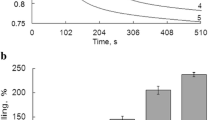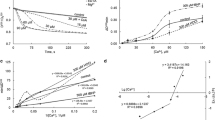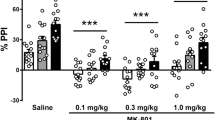Abstract
Mitochondrial permeability transition (MPT) is correlated with the opening of a nonspecific pore, the so-called transition pore, that triggers bidirectional traffic of inorganic solutes and metabolites across the mitochondrial membrane. This phenomenon is caused by supraphysiological Ca2+ concentrations and by other compounds leading to oxidative stress, while cyclosporin A, ADP, bongkrekic acid, antioxidant agents and naturally occurring polyamines strongly inhibit it. The effects of polyamines, including the diamine agmatine, have been widely studied in several types of mitochondria. The effects of monoamines on MPT have to date, been less well-studied, even if they are involved in a variety of neurological and neuroendocrine processes. This study shows that in rat liver mitochondria (RLM), monoamines such as tyramine, serotonin and dopamine amplify the swelling induced by calcium, and increase the oxidation of thiol groups and the production of hydrogen peroxide, effects that are counteracted by the above-mentioned inhibitors. In rat brain mitochondria (RBM), the monoamines do not amplify calcium-induced swelling, even if they demonstrate increases in the extent of oxidation of thiol groups and hydrogen peroxide production. In these mitochondria, the antioxidants are not at all or scarcely effective in suppressing mitochondrial swelling. In conclusion, we hypothesize that different mechanisms induce the MPT in the two different types of mitochondria evaluated. Calcium and monoamines induce oxidative stress in RLM, which in turn appears to induce and amplify MPT. This process is not apparent in RBM, where MPT seems resistant to oxidative stress.







Similar content being viewed by others
Abbreviations
- AdNT:
-
Adenine nucleotide translocase
- BHT:
-
Butyl hydroxy toluene
- BKA:
-
Bongkrekic acid
- CsA:
-
Cyclosporin A
- CyP-D:
-
Cyclophillin D
- DA:
-
Dopamine
- DTE:
-
Dithioerythritol
- DTNB:
-
5,5′-Dithio-bis (2-nitrobenzoic acid)
- ΔΨ:
-
Electrical transmembrane potential
- MAO:
-
Monoamine oxidase
- MPT:
-
Mitochondrial permeability transition
- NEM:
-
N-Ethylmaleimide
- PTP:
-
Permeability transition pore
- RBM:
-
Rat brain mitochondria
- RLM:
-
Rat liver mitochondria
- ROS:
-
Reactive oxygen species
- SER:
-
Serotonin
- TPP+ :
-
Tetraphenylphosphonium
- TXT:
-
Toloxatone
- TYR:
-
Tyramine
References
Agostinelli E, Arancia G, Vedova LD, Belli F, Marra M, Salvi M, Toninello A (2004) The biological functions of polyamine oxidation products by amine oxidases: perspectives of clinical applications. Amino Acids 27:347–358
Agostinelli E, Marques MP, Calheiros R, Gil FP, Tempera G, Viceconte N, Battaglia V, Grancara S, Toninello A (2010) Polyamines: fundamental characters in chemistry and biology. Amino Acids 38:393–403
Arndt MA, Battaglia V, Parisi E, Lortie MJ, Isome M, Baskerville C, Pizzo DP, Ientile R, Colombatto S, Toninello A, Satriano J (2009) The arginine metabolite agmatine protects mitochondrial function and confers resistance to cellular apoptosis. Am J Physiol Cell Physiol 296:C1411–C1419
Battaglia V, Rossi CA, Colombatto S, Grillo MA, Toninello A (2007) Different behavior of agmatine in liver mitochondria: inducer of oxidative stress or scavenger of reactive oxygen species? Biochim Biophys Acta 1768:1147–1153
Battaglia V, Grancara S, Satriano J, Saccoccio S, Agostinelli E, Toninello A (2010) Agmatine prevents the Ca(2+)-dependent induction of permeability transition in rat brain mitochondria. Amino Acids 38:431–437
Bisaglia M, Soriano ME, Arduini I, Mammi S, Bubacco L (2010) Molecular characterization of dopamine-derived quinones reactivity toward NADH and glutathione: implications for mitochondrial dysfunction in Parkinson disease. Biochim Biophys Acta 1802:699–706
Boveris A, Martino E, Stoppani AO (1977) Evaluation of the horseradish peroxidase scopoletin method for the measurement of hydrogen peroxide formation in biological systems. Anal Biochem 80:145–158
Brenner-Lavie H, Klein E, Zuk R, Gazawi H, Ljubuncic P, Ben-Shachar D (2008) Dopamine modulates mitochondrial function in viable SH-SY5Y cells possibly via its interaction with complex I: relevance to dopamine pathology in schizophrenia. Biochim Biophys Acta 1777:173–185
Butterworth RF (2000) Complications of cirrhosis III. Hepatic encephalopathy. J Hepatol 32:171–180
Dalla Via L, Salvi M, Di Noto V, Stefanelli C, Toninello A (2004) Membrane binding and transport of N-aminoethyl-1, 2-diamino ethane (dien) and N-aminopropyl-1, 3-diamino propane (propen) by rat liver mitochondria and their effects on membrane permeability transition. Mol Membr Biol 21:109–118
Gornall AG, Bardawill CJ, David MM (1949) Determination of serum proteins by means of the biuret method. J Biol Chem 177:751–766
Grijalba MT, Vercesi AE, Schreier S (1999) Ca(2+)-induced increased lipid packing and domain formation in submitochondrial particles. A possible early step in the mechanism of Ca(2+)-stimulated generation of reactive oxygen species by the respiratory chain. Biochemistry 38:13279–13287
Halestrap AP (2009) What is the mitochondrial permeability transition pore? J Mol Cell Cardiol 46:821–831
Halestrap AP, Brenner C (2003) The adenine nucleotide translocase: a central component of the mitochondrial permeability transition pore and key player in cell death. Curr Med Chem 10:1507–1525
Halestrap AP, Davidson AM (1990) Inhibition of Ca(2+)-induced large-amplitude swelling of liver and heart mitochondria by cyclosporin is probably caused by the inhibitor binding to mitochondrial-matrix peptidyl-prolyl cis-trans isomerase and preventing it interacting with the adenine nucleotide translocase. Biochem J 268:153–160
Kamo N, Muratsugu M, Hongoh R, Kobatake Y (1979) Membrane potential of mitochondria measured with an electrode sensitive to tetraphenyl phosphonium and relationship between proton electrochemical potential and phosphorylation potential in steady state. J Membr Biol 49:105–121
Lapidus RG, Sokolove PM (1994) The mitochondrial permeability transition. Interactions of spermine, ADP, and inorganic phosphate. J Biol Chem 269:18931–18936
Leung AWC, Varanyuwatana P, Halestrap AP (2008) The mitochondrial phosphate carrier interacts with cyclophilin D and may play a key role in the permeability transition. J Biol Chem 283:26312–26323
Loschen G, Flohe L, Chance B (1971) Respiratory chain linked H(2)O(2) production in pigeon heart mitochondria. FEBS Lett 18:261–264
Marcocci L, De Marchi U, Salvi M, Milella ZG, Nocera S, Agostinelli E, Mondovi B, Toninello A (2002) Tyramine and monoamine oxidase inhibitors as modulators of the mitochondrial membrane permeability transition. J Membr Biol 188:23–31
Mohanty JG, Jaffe JS, Schulman ES, Raible DG (1997) A highly sensitive fluorescent micro-assay of H2O2 release from activated human leukocytes using a dihydroxyphenoxazine derivative. J Immunol Methods 202:133–141
Nicholls DG (1978) Calcium transport and proton electrochemical potential gradient in mitochondria from guinea-pig cerebral cortex and rat heart. Biochem J 170:511–522
Nocito A, Dahm F, Jochum W, Jang JH, Georgiev P, Bader M, Renner EL, Clavien PA (2007) Serotonin mediates oxidative stress and mitochondrial toxicity in a murine model of nonalcoholic steatohepatitis. Gastroenterology 133:608–618
Orrenius S, Zhivotovsky B, Nicotera P (2003) Regulation of cell death: the calcium–apoptosis link. Nat Rev Mol Cell Biol 4:552–565
Rajput A, Zesiewicz TA, Hauser RA (2008) Monoamine oxidase inhibitors In: Factor SA and Weiner WJ (eds) Parkinson’s disease. Diagnosis and clinical management. Demos Medical Publishing, New York, pp 499–514
Remaury A, Ordener C, Shih J, Parini A (1999) Relationship between I2 imidazoline binding sites and monoamine oxidase B in liver. Ann N Y Acad Sci 881:32–34
Richardson JS (1993) On the functions of monoamine oxidase, the emotions, and adaptation to stress. Int J Neurosci 70:75–84
Santos AC, Uyemura SA, Lopes JL, Bazon JN, Mingatto FE, Curti C (1998) Effect of naturally occurring flavonoids on lipid peroxidation and membrane permeability transition in mitochondria. Free Radic Biol Med 24:1455–1461
Sava IG, Battaglia V, Rossi CA, Salvi M, Toninello A (2006) Free radical scavenging action of the natural polyamine spermine in rat liver mitochondria. Free Radic Biol Med 41:1272–1281
Schneider WC, Hogeboon HG (1953) Intracellular distribution of enzymes: XI. Glutamic dehydrogenase. J Biol Chem 204:233–238
Stevanato R, Cardillo S, Braga M, De Iuliis A, Battaglia V, Toninello A, Agostinelli E, Vianello F (2011) Preliminary kinetic characterization of a copper amine oxidase from rat liver mitochondria matrix. Amino Acids 40:713–720
Tassani V, Biban C, Toninello A, Siliprandi D (1995) Inhibition of mitochondrial permeability transition by polyamines and magnesium: importance of the number and distribution of electric charges. Biochem Biophys Res Commun 207:661–667
Toninello A, Salvi M, Mondovì B (2004) Interaction of biologically active amines with mitochondria and their role in the mitochondrial-mediated pathway of apoptosis. Curr Med Chem 11:2349–2374
Youdim MB, Gross A, Finberg JP (2001) Rasagiline [N-propargyl-1R(+)-aminoindan], a selective and potent inhibitor of mitochondrial monoamine oxidase B. Br J Pharmacol 132:500–506
Acknowledgments
We thank Istituto Pasteur-Fondazione Cenci Bolognetti for its financial support.
Conflict of interest
The authors declare that they have not conflict of interest.
Author information
Authors and Affiliations
Corresponding author
Rights and permissions
About this article
Cite this article
Grancara, S., Battaglia, V., Martinis, P. et al. Mitochondrial oxidative stress induced by Ca2+ and monoamines: different behaviour of liver and brain mitochondria in undergoing permeability transition. Amino Acids 42, 751–759 (2012). https://doi.org/10.1007/s00726-011-0991-2
Received:
Accepted:
Published:
Issue Date:
DOI: https://doi.org/10.1007/s00726-011-0991-2




